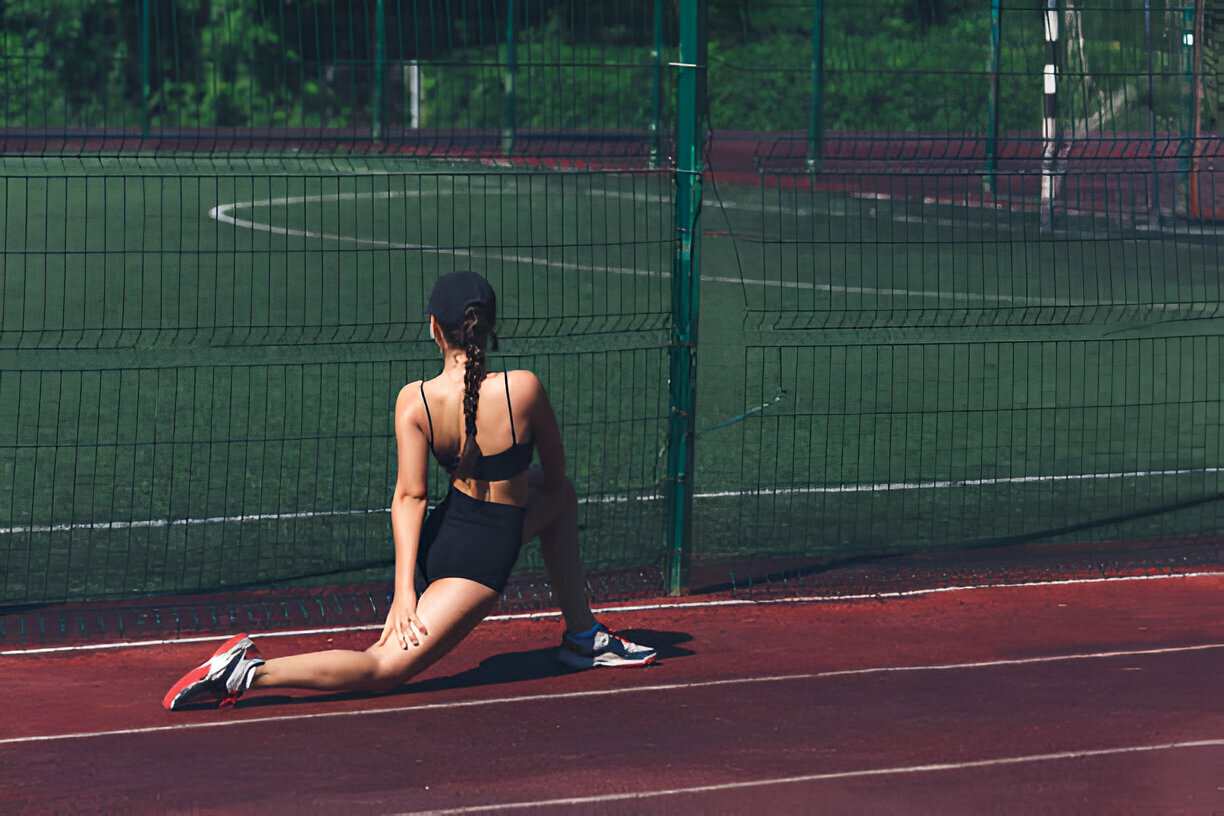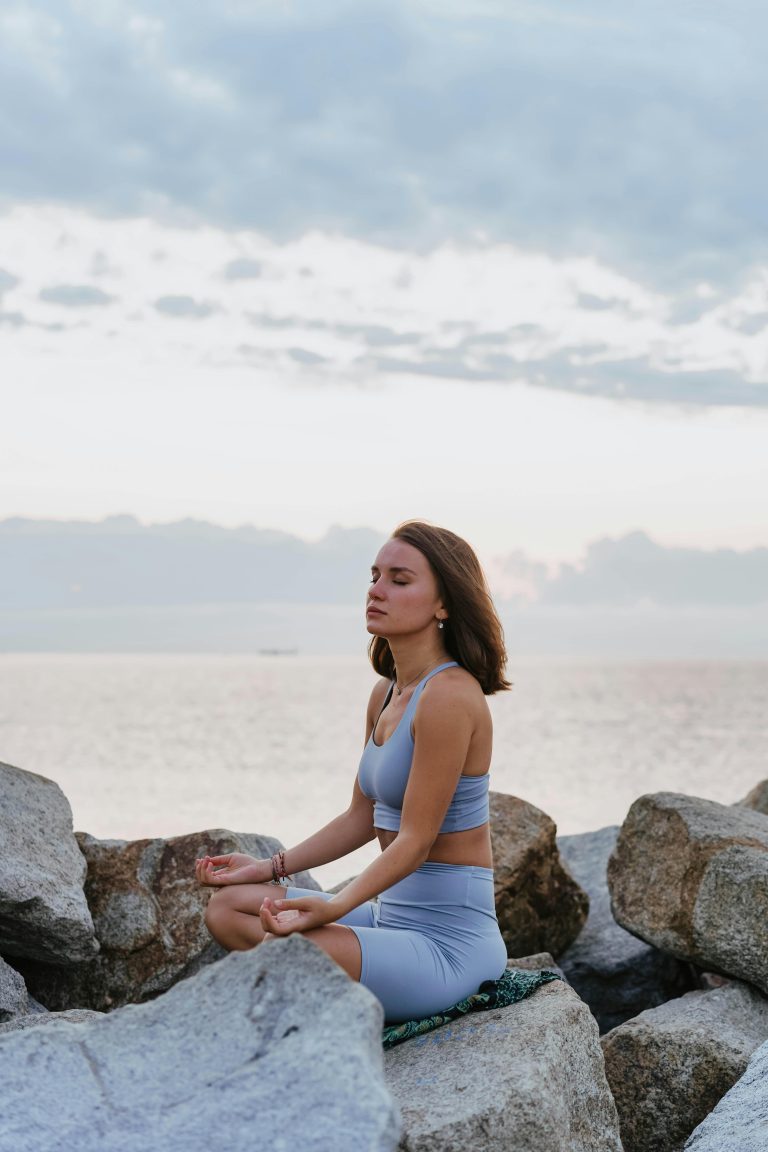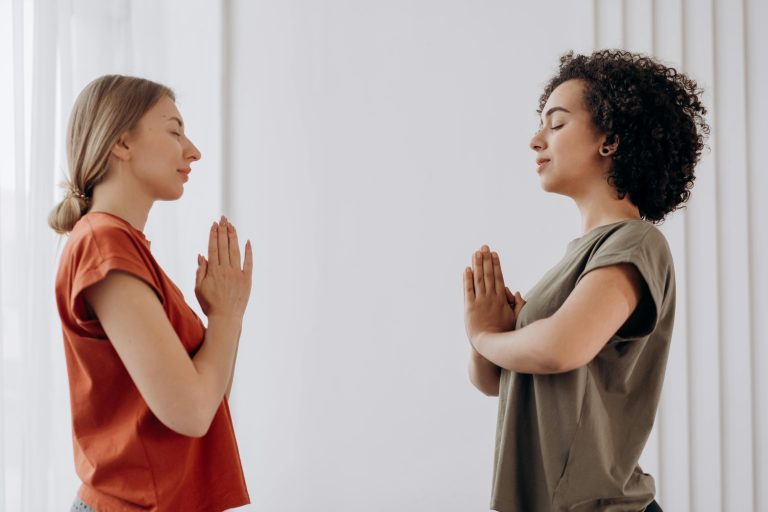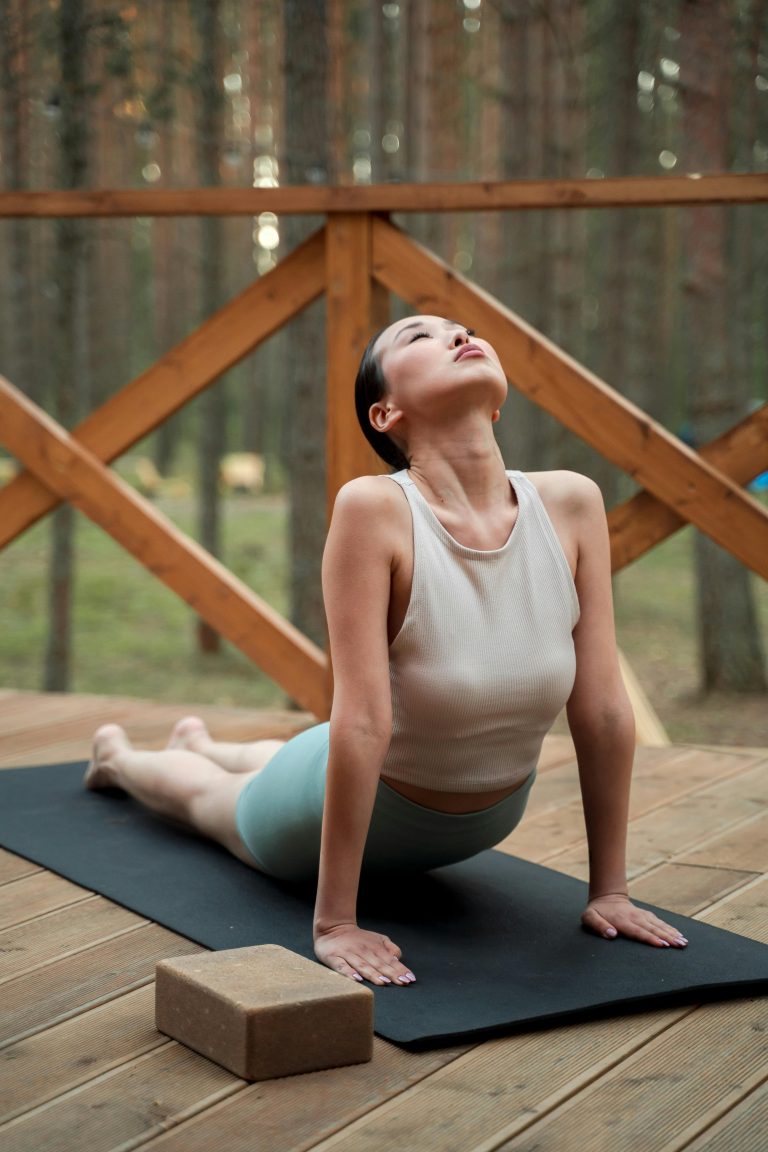Strength and Stability: Yoga for Glutes to Tone and Sculpt

Deep within the ancient practice of yoga lies a modern revelation: targeted asanas or postures can engage and strengthen the gluteal muscles. The glutes, a group comprised of the gluteus maximus, medius, and minimus, serve as vital pillars of support for the human body and are essential contributors to our capacity for upright movement. Yoga sequences designed specifically for the glutes not only enhance muscle tone but also improve overall stability.
Engaging in a consistent practice of Yoga for Glutes to Tone and Sculpt positions practitioners at the intersection of mindfulness and physical conditioning. While some tend to view yoga predominantly as a means for relaxation and flexibility, this tailored approach underscores its potency in muscle sculpting. Poses such as the Warrior series, Bridge Pose, and Locust Pose, among others, are leveraged to activate and challenge the glute muscles. The integration of isometric holds and mindful movement helps in creating a deep burn and encourages muscle hypertrophy; crucial for those seeking to tone their posterior.
The specific impacts of these yoga practices on gluteal strength translate into a cascade of benefits beyond aesthetic enhancement. Strong glutes contribute to a reduction in lower back pain, improved posture, and enhanced athletic performance. The harmonious blend of strength and stability work inherent in Yoga for Glutes not only sculpts the body but also fortifies the foundation essential for dynamic movement and daily activities.
As practitioners advance through sequences tailored to gluteal engagement, they often uncover improved proprioception – the body’s ability to sense motion, action, and location – resulting in greater balance and coordination. This focus on the posterior chain also aligns with contemporary fitness trends that emphasize functional movement over isolated exercise regimes. Consequently, people of diverse fitness backgrounds find common ground in a practice that addresses both their strength and flexibility needs.
The forthcoming section will delve into the intricacies of individual asanas, illuminating their biomechanical underpinnings and elucidating the ways in which they strategically recruit and build the gluteal muscles. This analysis will extend beyond the common pigeon pose, shining a spotlight on lesser-known yet powerfully effective poses. For the avid yogi or the strength-training enthusiast, these insights could serve as an invaluable blueprint for developing a robust and balanced posterior chain.
- Integrating yoga for glutes into a fitness routine can enhance muscular strength, improve stability, and aid in sculpting a firm and toned backside.
- Specific yoga poses targeting the gluteal muscles include the Bridge Pose (Setu Bandhasana), the Warrior series (Virabhadrasana), and the Chair Pose (Utkatasana), each effectively engaging and strengthening these muscles.
- Consistent practice of glute-focused yoga poses can lead to better posture and alignment due to the supportive role the glutes play in maintaining the structure of the lower back and hips.
- Aside from aesthetic benefits, strong glutes are crucial for a solid foundation in any physical activity, offering increased power and preventing lower back pain and injuries.
- Yoga for glutes not only concentrates on muscle building but also incorporates stretching, which can release tension and tightness, improving overall mobility and flexibility.
- For those who sit for prolonged periods, yoga targeting the glutes can counteract the weakness and inhibition of the muscles caused by sedentary behavior.
- Engagement and mindful activation of the gluteal muscles during yoga practice can elevate mental focus and mind-muscle connection, enhancing the effectiveness of the workout.
- Proper breathing techniques in yoga help maximize each pose’s impact on the glutes, ensuring deeper engagement and optimal results.
- Beginners are encouraged to start with foundational glute exercises and gradually advance to more challenging postures under the guidance of a proficient yoga instructor.
- The integration of props, such as yoga blocks and straps, can aid in achieving proper form and alignment, making glute exercises more accessible and effective.
- Regular practice of yoga for glutes can contribute to balanced muscle development and can be a valuable supplement to other forms of lower body training.
How Can Yoga Enhance Glute Strength and Definition?
When it comes to improving both strength and stability, yoga for glutes is an excellent choice for individuals seeking to tone, sculpt, and enhance the power of their lower body. Specific asanas, or yoga poses, have been shown to engage the gluteal muscles—comprised of the gluteus maximus, medius, and minimus—aiding in muscle growth and support for the pelvis and hips. Yoga’s focus on alignment, balance, and strength naturally incorporates exercises that can increase gluteal muscle endurance and power, contributing to a well-rounded fitness regimen and posture improvement.
Understanding the physiological and anatomical aspects of yoga for glutes is crucial for anyone interested in the intricate processes of strengthening and sculpting the body’s muscle tissue. The gluteal muscles are among the most powerful in the body and are essential for a vast range of activities including walking, running, and maintaining an upright posture. Yoga poses targeting the glutes, such as Bridge Pose (Setu Bandhasana) and Warrior Pose (Virabhadrasana), not only enhance the aesthetics of the glutes but also contribute to overall functional fitness, reducing the likelihood of injury and pain typically associated with weak or imbalanced gluteal muscles.
Core Strengthening Pilates Exercises
Pilates is renowned for its focus on core strength, enhancing the power and endurance of the muscles that wrap around the torso. The ‘Teaser’ is a quintessential Pilates move that challenges the rectus abdominis, obliques, and the transversus abdominis. It begins with one lying flat on the mat, inhaling deeply while lifting both arms overhead. As you exhale, engage your core muscles to peel your upper body and legs simultaneously off the floor, forming a V-shape. The legs are extended straight, at about a 45-degree angle from the floor, while the arms reach parallel towards the toes. Precision and control are fundamental as you balance at the apex of the movement before rolling back down to the mat with the same deliberate, fluid motion.
Resistance Training for Lower Body Strength
When discussing lower body strength, squats and lunges are vital components of resistance training. With the squat, one’s feet are placed shoulder-width apart, weight centered over the heels. The descent is initiated by hinging at the hips, sitting back as if reaching for an imaginary chair, keeping the chest proud and the back straight. As thighs parallel the ground, muscles including the quadriceps, hamstrings, and glutes activate to push back to a standing position. Lunges similarly engage the lower body mechanics, but add an element of balance and stability. A step forward is taken, and the body is lowered till both knees are bent at 90-degree angles. The forward leg works to bear the brunt of your body weight while the glute muscles of the back leg stabilize the movement.
Functional Training for Everyday Movements
Functional training is designed to simulate common movements one might do at home or work, enhancing the ease of daily activities. The ‘Farmer’s Walk’ is an excellent exercise that develops grip strength, shoulder stability, core endurance, and overall posture. With a heavy object or weight in each hand, you stand tall and walk a significant distance, maintaining an upright posture. This mimetic exercise not only improves muscular endurance but also influences the neuromuscular system to perform everyday tasks with better efficiency and reduced risk of injury.
High-Intensity Interval Training for Cardiovascular Health
High-intensity interval training (HIIT) involves short bursts of high-intensity exercises followed by brief periods of rest, pushing the cardiorespiratory system to its limits. A typical HIIT session may encompass sprints, burpees, or jumping jacks, punctuated with intervals of walking or complete rest. These workouts are time-efficient, often lasting 30 minutes or less, but they are potent stimulators of metabolic adaptations. They induce afterburn, known as excess post-exercise oxygen consumption (EPOC), which means the body continues to burn calories at an elevated rate even after the workout has concluded. EPOC is a reflection of the body’s increased demand for oxygen restoration, replenishment of energy stores, and normalization of body temperature following strenuous activity.
1. Why is yoga effective for toning and sculpting glutes?
Yoga is effective for toning and sculpting glutes because it combines strength-building poses with balance and flexibility exercises, which target the muscles in the buttocks. The controlled movements and postures require engagement of the gluteal muscles, ensuring they are activated and worked throughout the practice. This leads to muscle strengthening and definition over time.
Additionally, yoga promotes mind-body awareness, which helps practitioners focus on muscle engagement and proper form. As individuals become more aware of their body mechanics, they can better activate their glutes during each pose, leading to more efficient and effective workouts for the target area.
2. How often should I practice yoga to see results in my glute strength and appearance?
To see noticeable improvements in glute strength and appearance through yoga, consistency is key. It is recommended to practice yoga targeting the glutes at least 2-3 times a week. Coupling this routine with other forms of exercise for a well-rounded fitness regimen can lead to quicker results, as variety in workouts can prevent muscle adaptation and plateaus.
Results will vary based on factors like training frequency, individual body types, diet, and overall lifestyle. However, with regular practice and patience, most individuals will begin to see positive changes in glute strength and appearance within a few weeks to a few months.
3. What are some yoga poses that specifically target glutes?
There are several yoga poses that specifically target the glutes. Poses such as Bridge Pose (Setu Bandhasana), Warrior III (Virabhadrasana III), and Single-Legged King Pigeon Pose (Eka Pada Rajakapotasana) are known for their ability to engage and strengthen the gluteal muscles. These poses focus on isolating and working the glutes through sustained holds and controlled movement.
Another effective pose is the Locust Pose (Salabhasana), which strengthens the back of the body, including the glutes. Squat variations like Goddess Pose (Utkata Konasana) and Chair Pose (Utkatasana) also provide a significant challenge to the glutes, promoting tone and sculpting in the area.
4.Will yoga exercises for glutes also help with reducing lower back pain?
Yes, yoga exercises for glutes can help with reducing lower back pain. Strong and well-conditioned gluteal muscles play a significant role in stabilizing the pelvis and supporting the lower back. When glutes are weak or underactive, other muscles like those in the lower back may overcompensate during movement, leading to pain and discomfort.
Through targeted yoga practices, glutes become stronger and more capable of carrying out their functional roles. This can decrease the likelihood of lower back pain by promoting proper alignment and reducing stress on the lumbar spine. However, it’s important to practice under the guidance of a knowledgeable instructor, especially if you have existing back issues, to ensure you’re performing poses correctly and safely.
5. Can beginners try yoga for glutes, or is it only for experienced practitioners?
Beginners can certainly try yoga for glutes. Many yoga sequences designed for glute strengthening include modifications to accommodate different skill levels. It is important for beginners to start with basic poses and gradually progress to more challenging variations as their strength and flexibility increase. Listening to one’s body and using props such as blocks or straps can help make poses more accessible.
An experienced yoga instructor can be invaluable in guiding beginners through safe and effective practices. They can offer personalized adjustments and ensure that practitioners maintain proper form to prevent injury and maximize the benefits of each pose. Beginning with foundational glute-targeting poses will set a solid base for more advanced practices in the future.
6. Are there any precautions I should take while performing yoga for glutes?
It is important to take certain precautions while performing yoga for glutes to prevent injury and ensure the best outcomes from your practice. First, always warm up properly to prepare the muscles and joints for activity. It’s also crucial to use proper form and alignment in each pose to avoid strain, particularly in the knees, lower back, and hips. If a pose causes pain or discomfort, you should come out of it or adjust the posture with the help of a knowledgeable instructor or by using props.
Additionally, if you have any pre-existing health conditions or injuries, especially related to the hips, knees, or spine, you should consult with a healthcare professional before beginning a yoga routine. Make sure to communicate any issues with your yoga instructor so they can provide appropriate modifications and help maintain a safe practice for you.
7. How does yoga for glutes compare to other forms of glute exercises, like squats or lunges?
Yoga for glutes offers a different approach compared to traditional glute exercises like squats or lunges. While squats and lunges are dynamic, high-impact movements that typically involve repetitions to build strength and muscle size, yoga focuses on static holds, balance, and body alignment. Yoga tends to build strength in a more holistic manner, enhancing flexibility and improving overall body control along with targeting muscle strength.
Another difference is the mind-body connection emphasized in yoga. This mindfulness can lead to greater awareness of muscle engagement and activation, which can enhance the quality of traditional glute exercises as well. Both methods can be complementary, and incorporating yoga into a fitness routine that includes squats and lunges can provide a well-rounded approach to glute development and overall health.
8.Is it necessary to have any special yoga equipment to perform glute-focused yoga?
It is not necessary to have any special yoga equipment to perform glute-focused yoga, but a few basic items can enhance your practice. A yoga mat is recommended to provide a non-slip surface and cushioning for comfort. Additionally, yoga blocks and straps can offer support and aid in alignment during various poses, which can be particularly helpful for beginners or those with limited flexibility.
However, the simplicity of yoga means you can also use household items as substitutes for these props, such as a sturdy book for a block or a belt for a strap. The key is to ensure your safety and comfort so that you can maintain proper form throughout each pose.
9. What is the expected duration of a yoga for glutes session to be effective?
The duration of a yoga for glutes session can vary depending on your fitness level, goals, and the complexity of the routine. An effective session can typically last anywhere from 20 to 60 minutes. Shorter sessions can focus on a few specific poses with more repetitions or longer holds, while longer sessions can provide a more comprehensive workout that includes a broader range of poses impacting the glutes, hips, and core.
It’s important to remember that quality is more important than quantity. Even a shorter session with full engagement and proper form can be very effective for strengthening the glutes. As you build strength and endurance, you can gradually increase the duration or intensity of your practice.
10.Can practicing yoga for glutes also lead to weight loss?
Practicing yoga for glutes can contribute to weight loss as part of an overall healthy lifestyle. While yoga is not typically recognized for its high calorie-burning potential compared to high-intensity cardio workouts, it can still aid in weight management. Strength-building yoga practices increase muscle mass, which in turn can help boost metabolism and the body’s ability to burn calories more efficiently.
Moreover, the mindful eating habits often promoted within the yoga community, alongside the stress-reduction benefits of the practice, can also support weight loss goals. It is important to combine yoga with a balanced diet and possibly other forms of exercise for a comprehensive approach to weight management.
Final Thoughts
Embracing yoga for glutes is a holistic approach to toning and sculpting your lower body, contributing to overall strength and stability. Key postures including bridge pose (Setu Bandhasana), warrior III (Virabhadrasana III), and chair pose (Utkatasana) specifically target the gluteal muscles, fostering a solid foundation for daily activities and athletic pursuits. The practice of yoga for glutes not only enhances the aesthetic appearance of the glutes but also improves posture and reduces the risk of injury by aligning the body properly and strengthening the supportive musculature.
Regular incorporation of glute-focused sequences into your yoga practice can lead to significant improvements in balance and functional strength. These benefits extend beyond the mat, as a strong lower body is crucial in supporting the spine and maintaining proper body mechanics. By dedicating time to practice yoga for glutes, you’re investing in a sustainable form of exercise that promotes not just physical but also mental stability.
In summary, a consistent yoga routine that puts emphasis on the glutes can lead to profound positive effects on both your physical and mental well-being. Moreover, as you continue to practice and challenge your body with new poses and longer holds, you’ll likely notice a more toned and sculpted appearance matched with enhanced stability and strength throughout your entire body.






